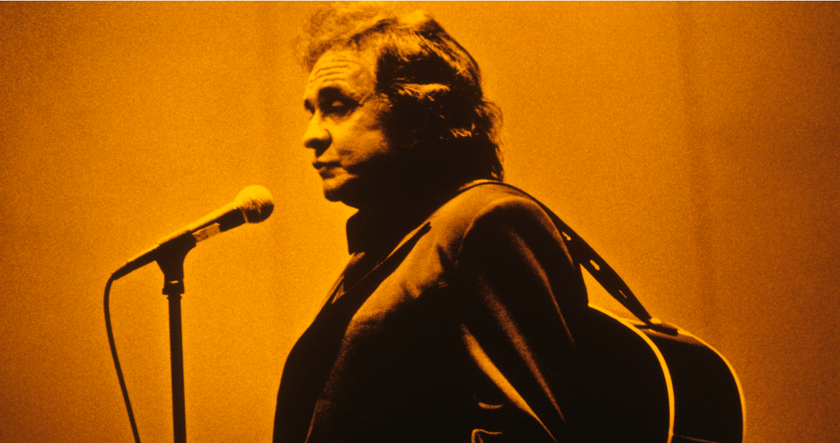101 facts you really never knew about music: part 2
Welcome to MusicRadar's 101 facts you really never knew about music, the third in a continuing series of trivia blowouts born from the marriage of our insatiable thirst for knowledge with our warm appreciation of the pub quiz.
If you need to orient yourself in MusicRadar's world of trivia then give last year's 101 facts a read. Then possibly follow that up with 101 more.
Otherwise, go on ahead and dive into our 2010 selection: you'll find part 1 here and part 2 below.
26. Being perfectly in tune is technically impossible. Just Intonation is the scientifically 'pure' method of tuning where intonation is based on whole number ratios between intervals, therefore remaining true to the harmonic series (the scientific foundation of harmony). But using just intonation yields a discrepancy between the intervals of 12 perfect fifths and 7 octaves. These intervals - the difference between C1 and C8 - should be the same, but the note C8 will be a different pitch in each case. The difference between the two notes - named the Pythagorean Comma for the Greek polymath that discovered it - is about a quarter of a semitone and lead to the adoption of equal temperament: the tuning system in use today which evens out the difference by flattening each justly-tuned perfect fifth by a 12th of a Pythagorean comma (one fourty-eighth of a semitone). Equal temperament has been in use since the 16th century, and was first championed by Italian lutenist Vincenzo Galilei - Galileo's dad.
27. Larry Mullen Jr's middle name is Joseph.
28. Tablature in European music dates back to around 1300, when it was used as notation for lutes.
29. Pink Floyd's Nick Mason holds the record for baking the world's largest crumpet. "It was a bit tough, actually," he said in 2006.
Get the MusicRadar Newsletter
Want all the hottest music and gear news, reviews, deals, features and more, direct to your inbox? Sign up here.
30. Virgin tycoon Richard Branson named his company's Now series of compilations for a 1920s Danish bacon poster, which featured a pig exclaiming "Now that's what I call music!" whilst listening to a whistling cockerel.
31. In 1991, jazz funk outfit Galliano set off in pursuit of the 13th note. They didn't find it.
32. An anagram of Mister Mister is Mister Mister.
33. Each string on a piano is pulled to an average tension of 90 kilograms. Given that there are an average of 200 strings, the average grand piano is under a total tension of around 18 tons.
34. Sex Pistols debut Never Mind The Bollocks narrowly avoided being banned from display after defending the QC managed to prove that "bollocks" was an Old English term for a priest.
35. Brian Eno's real name is Brian Peter George St. John le Baptiste de la Salle Eno.
36. The title of Oasis's fourth studio album incorrectly quotes Sir Issac Newton, who once famously said: "If I can see further than anyone else, it is only because I am standing on the shoulders of giants". Dyslexic Noel Gallagher inadvertently omitted the final 's' from 'shoulders' when he wrote the quote down on the side of a cigarette packet after seeing it on a £2 coin.
37. The Guinness Book Of Records has banned new entries to the loudest rock concert category for fear of seeming irresponsible. US metallers Manowar claim the unofficial record, though, at 139dB - that's 9dB above what scientists call the Threshold Of Pain.
38. Cymbal giants Zildjian is one of the oldest companies in the world. The first Zildjian cymbals rolled off the production line in 1623, in what was then Constantinople (modern-day Istanbul).
39. Deathgrind band Cattle Decapitation's album Human Jerky is 12 minutes and 26 seconds long. It comprises 18 tracks.
40. The longest concert of all time started was written in 1987 by avant-garde pioneer John Cage. Cage, who passed away in 1992, never lived to see his creation played in its entirety - As Slow As Possible started in 2001 and is scheduled to finish in 2640. Cage is also famous for his 'prepared piano' compositions, plus his 1952 opus 4'33", an entirely silent piece in three movements.
41. Amusia is a neurological condition where some people are unable to hear or process music. In some cases a sufferer may be unable to recognise a familiar melody or find reading musical notation impossible. A case noted by musicologist Oliver Sacks in his book Musicophilia features an analogy from a women afflicted more severely: "If you were in my kitchen and threw all the pots and pans on the floor, that's what I hear".
42. Some neuromusicologists claim the reason that rhythm (and by extension, the urge to dance) feels so primal is that rhythm is processed in lower, evolutionary 'older' parts of the brain (such as the cerebellum) when compared to pitch and harmony.
43. Trying to play a super-high note on a trumpet fitted with the wrong-sized mouthpiece can cause your top lip to explode.
44. Bose's Wave Cannon - a 12-foot long bass bazooka - is the coolest speaker product ever made. And that's a fact.
45. The interval of a tritone (an augmented fourth - three whole notes) was considered so dissonant during the Middle Ages that it was supposedly banned by the Chruch. Its nickname, 'Diabolus in Musica', means 'the Devil in music'.
46. JS Bach was famous for his use of the BACH motif: a four-note musical cryptogram which appears to spell his name. The motif - B flat, A, C, B natural - spells his name when using German music terminology where a 'B' represents B flat and an 'H' represents B natural.
47. There's a genre of music called Crabcore. Here's a video - wait for the vocals at 0:37. Then the remix at 2:46. Then the vocals again at 3:08. Lovely stuff.
48. Pat Metheny has a 42-string acoustic guitar. The Manzer Pikasso II features three necks and four string sets, some of which are strung like a harp. Check out this incredible video of Metheny playing it live.
49. Abbey Road's Studio One is the largest purpose-built recording studio in the world.
50. In the US, the most (legally) downloaded song of the decade was Flo Rida ft T-Pain's Low.
MusicRadar is the internet's most popular website for music-makers of all kinds, be they guitarists, drummers, keyboard players, DJs or producers.
GEAR: We help musicians find the best gear with top-ranking gear round-ups and high-quality, authoritative reviews by a wide team of highly experienced experts.
TIPS: We also provide tuition, from bite-sized tips to advanced work-outs and guidance from recognised musicians and stars.
STARS: We talk to artists and musicians about their creative processes, digging deep into the nuts and bolts of their gear and technique. We give fans an insight into the actual craft of music-making that no other music website can.

“Sometimes I am two people. Johnny is the nice one. Cash causes all the trouble. They fight”: How Johnny Cash drew on his own experiences to make his greatest songs

“A musical style, defined by plaintiffs as ‘pop with a disco feel’, cannot possibly be protectable”: Dua Lipa wins victory in Levitating court case as judge rules that there is no copyright infringement










